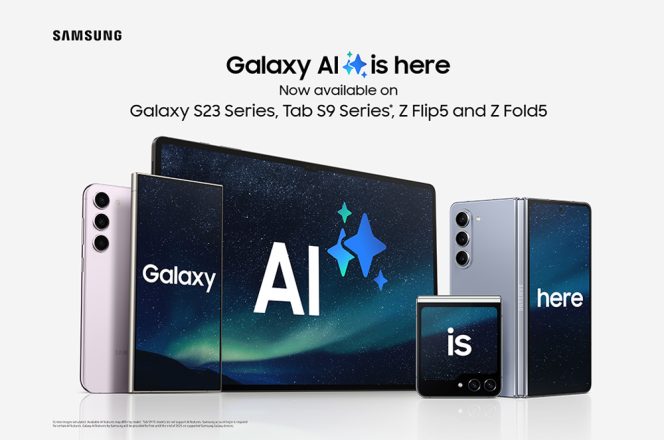Samsung’s Galaxy AI has undeniably redefined how artificial intelligence is integrated into smartphones, and it’s not just hype. From the early days when AI was little more than a marketing buzzword, Samsung has evolved its technology into a genuinely powerful tool that enhances daily life. While competitors like Apple and Google are making strides, Samsung remains ahead of the curve with AI features that feel practical, intuitive, and deeply embedded in its ecosystem.
The Game-Changer: Galaxy AI’s Evolution
When Samsung initially released Galaxy AI, it was good, but not groundbreaking. Fast forward to today, and the upgrades brought about by the Galaxy Z Fold 6 and Galaxy Z Flip 6 have elevated the AI experience to unprecedented levels. For anyone following the AI space, it’s clear that Samsung’s implementation isn’t just about adding features for the sake of marketing. It’s about refining technology to make smartphones smarter and more helpful.

One of the standout features is Generative Edit, which initially seemed like a novelty but has since evolved into something much more robust. What started as a simple tool to fill spaces in images or integrate elements from other photos has now become a sophisticated generative art machine. With the latest updates, you can draw something on your screen, and Galaxy AI generates an image that’s not only realistic but understands complex aspects like lighting and shadows. This kind of precision is unparalleled in the smartphone world, making Samsung’s implementation genuinely unique.
Beyond Gimmicks: Why Other AI-Powered Phones Fall Short
Many smartphone manufacturers claim to offer AI features, but most of these are little more than dressed-up gimmicks. Samsung’s competitors often take pre-existing features and slap an AI label on them, but the reality is that these features barely scratch the surface of what true AI can do. On the contrary, Galaxy AI is designed to serve real-world needs. Whether it’s simplifying photo editing or enhancing productivity through smarter note summaries, the features are crafted with user utility in mind.
A notable example is Samsung’s Note Summary feature, which far surpasses what’s available on rival devices like Oppo. While both systems can summarize text, Samsung’s AI organizes information into concise points and paragraphs, making the output much easier to digest. It’s a seemingly small difference, but it makes a significant impact on usability.
AI That Enhances Everyday Life
One of the most important aspects of Galaxy AI is that it’s designed to assist with day-to-day tasks that genuinely matter. For example, the translation feature splits the screen, allowing a foreign speaker to read one side while you get the translated version on the other. This is a game-changer for international travelers or anyone working in a multilingual environment. Samsung’s AI does more than just offer translation; it turns your phone into a portable interpreter, available at the flick of a screen.

Another significant feature is Magic Compose, which uses generative AI to help you write emails, social media captions, or even text messages. You simply input a prompt, choose a style, and Galaxy AI does the rest. It’s features like these that set Samsung apart from the competition, showing that AI can be a valuable productivity tool rather than a flashy, underused feature.
Pushing the Limits: AI Studio and No Credit Caps
Samsung has also pushed the boundaries with its AI Studio Portrait Mode, which generates artistic portraits from your selfies. Unlike Apple’s animoji or Oppo’s AI Studio, which come with limitations like credit caps, Samsung’s implementation is much more generous. There are no restrictions on how many portraits you can generate, making it far more accessible for users who enjoy experimenting with creative photography.
The fact that Samsung has chosen not to impose a credit cap—at least for now—shows its commitment to providing value without hidden fees. This is especially refreshing in a landscape where companies are increasingly looking to monetize every feature. Samsung’s decision to keep Galaxy AI free (with some features potentially moving behind a paywall in the future) ensures that users can fully immerse themselves in the AI experience without constantly worrying about hitting a usage limit.
Seamless Integration with Google’s AI Models
Samsung has partnered with Google to bring advanced AI capabilities to its Galaxy devices, utilizing Google’s Gemini Pro and Imagen 2 models. This collaboration allows Galaxy AI to function across a range of inputs—whether it’s text, images, or voice. Unlike other AI systems, which often require cloud processing, Samsung’s approach allows some of the smaller models to run directly on the phone, providing faster, real-time responses.
This multimodal input capability means Galaxy AI can understand and respond to various types of information, making it highly versatile. Whether you’re uploading an image, asking for text-based answers, or using speech commands, Galaxy AI can interpret and act on your requests, streamlining your workflow and eliminating unnecessary steps.
Samsung’s Practical Approach to AI
Perhaps what truly makes Galaxy AI unbeatable is its focus on practicality. Samsung understands that users don’t need AI features just for the sake of having them—they need features that make their lives easier. Instead of gimmicky dynamic islands or flashy aesthetic changes, Samsung has focused on creating AI tools that help users accomplish more in less time. From composing emails to summarizing web pages and managing notes, Galaxy AI is tailored for users who value efficiency and productivity.
Moreover, the implementation of Instant Slow-Mo in the Galaxy S24 series, which allows users to generate additional frames by simply pressing and holding a video, demonstrates Samsung’s commitment to pushing the boundaries of AI in a meaningful way. This feature is not just fun—it’s genuinely useful, providing users with cinematic slow-motion footage without needing professional equipment.
Looking Ahead: The Future of Galaxy AI
As of now, Samsung has no immediate plans to charge for Galaxy AI, although some premium features may eventually require a subscription. However, given the current landscape, where companies like Apple are bundling services together, it wouldn’t be surprising to see Samsung offer a similar package down the line. If and when that happens, it will likely be bundled with other Samsung services, adding even more value to the already robust Galaxy AI platform.
Samsung’s Galaxy AI is in a league of its own because it offers practical, user-focused features that genuinely enhance everyday smartphone use. While other manufacturers are still playing catch-up, Samsung has solidified its position as the leader in AI-powered smartphones. If you’re looking for a device that leverages artificial intelligence in ways that matter, Samsung’s Galaxy lineup is unbeatable.



